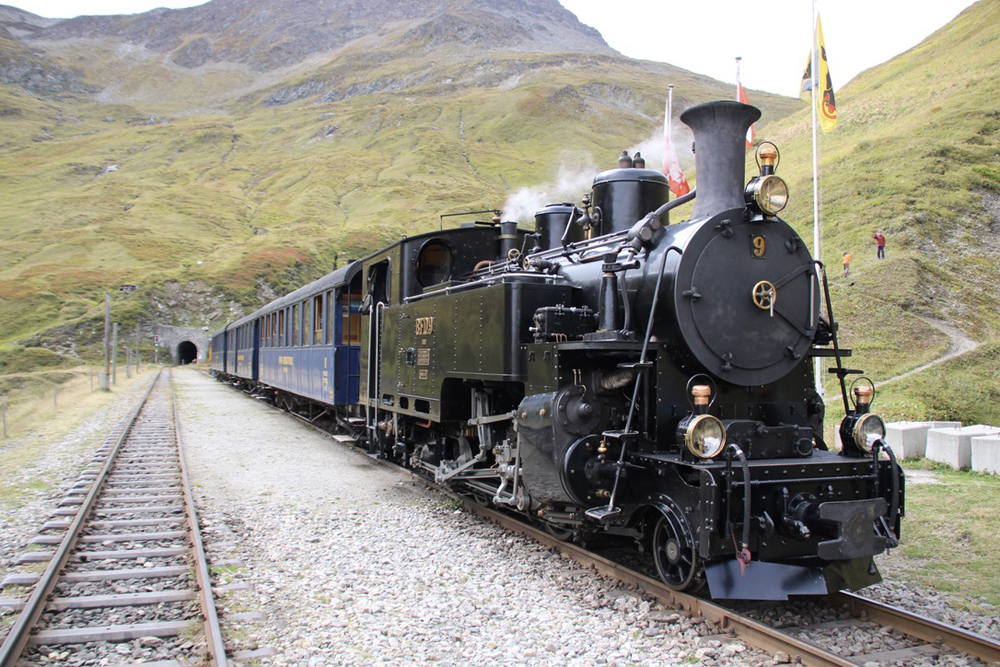
ZERMATT, Switzerland — Finally getting back up to date on events on the Trains/Special Interest Tours “Majestic Switzerland” tour:
Sunday, Sept. 17
This was our longest day, leaving Chur at 6:25 a.m. and getting to Zermatt at 6:14 p.m. Those times were dictated by our trip on the Furka Cogwheel Steam Railway, the all-volunteer steam train that runs on the former Rhätische Bahn route over Furka Pass, which was replaced as the main line in 1982 with the opening of the 15.4-kilometer (9.6-mile) Furka Base Tunnel. That tunnel allowed the route between Andermatt and Visp to stay open year-round, since winters on the historic route — which reaches an elevation of 2,160 meters, or 7,087 feet — are harsh enough to shut the line down.
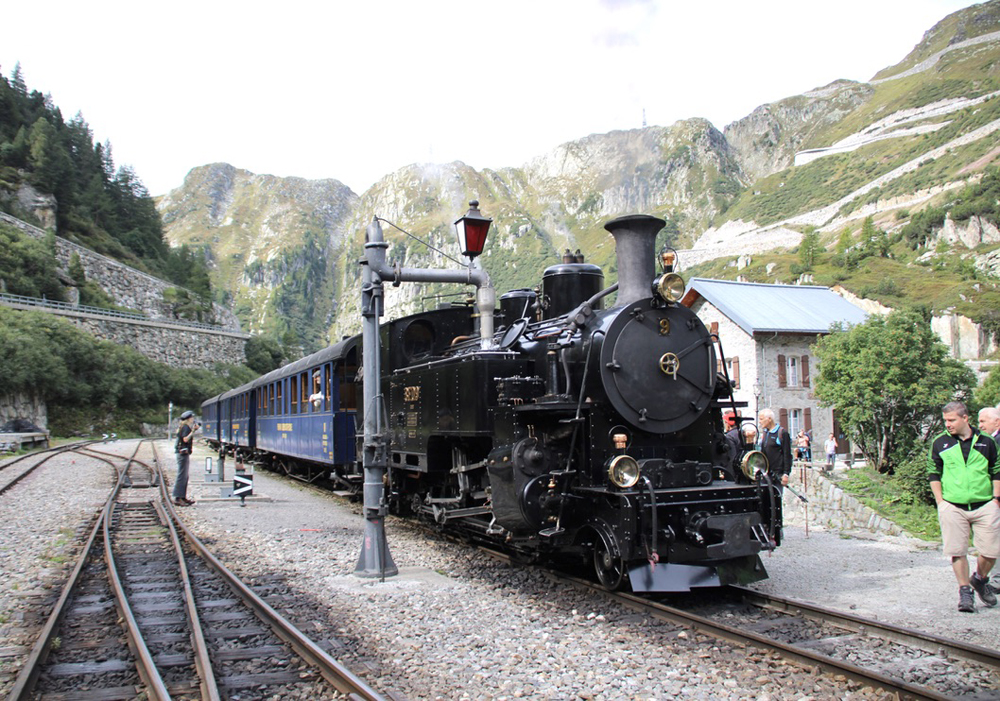
When the base tunnel opened, dismantling of the Furka Pass line began, but preservationists railied to halt its destruction and formed an organization to save the railroad. That led to an agreement in 1984 with then-operator Furka-Oberalp Bahn and a group that would eventually become the Furka Steam Railway to preserve the route. The preservation group gradually raised the necessary funds to restore the line to operating condition, acquire equipment, and operate it on a portion of the route, beginning in July 1992. By 2010, the entire 18-kilometer Furka Pass route between Oberalp and Realp is again operable; the railroad now operates there seasonally (this year, operations run from June 29 to Sept. 24). It has a stable of six steam locomotives, all at or near operable condition.
We rode the train from Oberalp to Realp, and it was a delight, in no small part because our conductor (whose name I thoughtlessly neglected to write down) was a personable, knowledgeable fellow with a good command of English who was happy to spend some time with our group, sharing with us details of the railroad’s history and operations. (Many of these details are available in Jim Wrinn’s May 2013 Trains article, “Two throttles wide open to the top of Furka Pass.’) Of course, it was scenic. It was also one of those volunteer operations that managed to project a very professional air. The shop facilities in Realp, which we toured after our ride, were impressive in their organization and order. It was a great trip in its own right, and it was also great to be able to support such a quality organization.
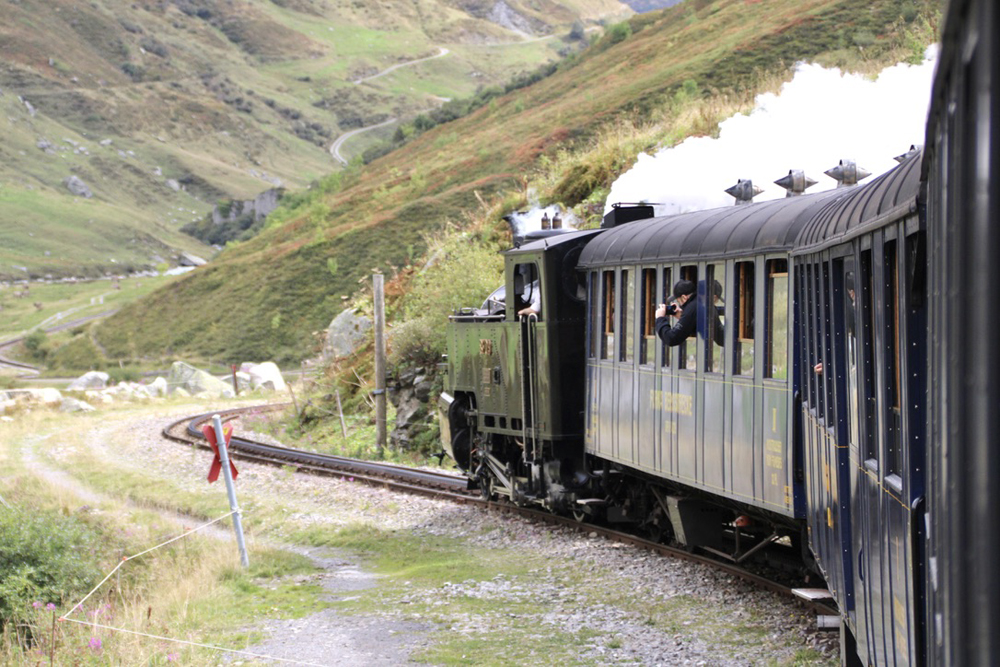
After that, we boarded the Rhätische Bahn at Realp, went through the Furka Base Tunnel for the second time (we’d passed through to reach Oberalp, where we’d boarded the steam railway), and went on to Zermatt, where we’re enjoying our first two-night stay of the tour. One thing the tour group learned on that trip was one that I had experienced earlier: If you’re traveling on a nice Sunday afternoon in Switzerland, the whole of the country will be traveling with you. As I have mentioned previously, they take their hiking seriously here, and well before our train from Realp reached Brig — a major connecting point with the SBB system — people were filling every seat and standing or sitting in every inch of the aisles as they returned home from their afternoon of hiking in the Alps. Not really the most enjoyable trip, particularly since I ended up with a burly guy next to me who smelled like he was singlehandledly keeping Marlboro profitable. But the crowding was relatively short-lived.
Today — Monday, Sept. 18
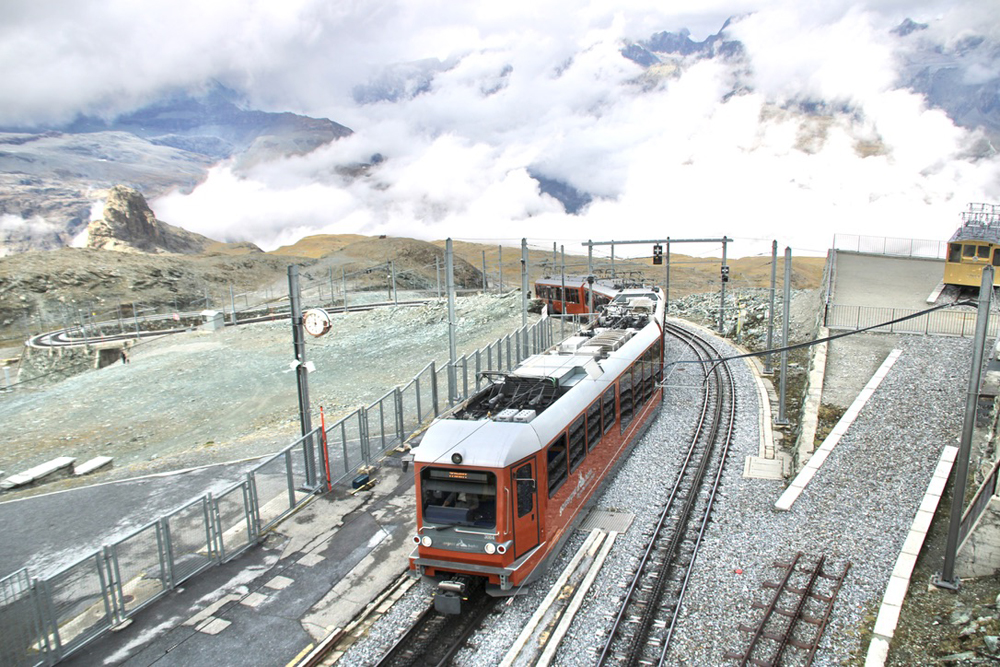
After a few long days, today is fairly relaxed. We’re just back from a trip on the Gornergrat Bahn, the cog railway that climbs from Zermatt, at an elevation of 1,620 meters (5,315 feet) to Gornergrat at 3,089 meters (10,135 feet). On a clear day, this gives you a spectacular view of the Matterhorn … but this was not one of those days. Still, it wasn’t bad. It was raining in Zermatt this morning, and we encountered some rain on the way up, which provided us with this rainbow.
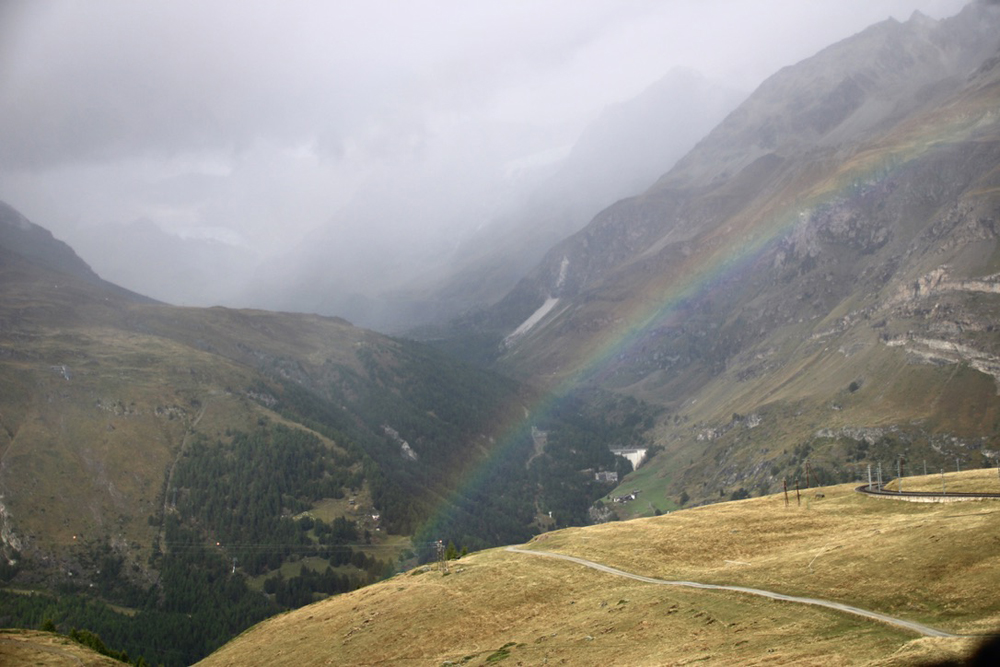
But it was clear to partly cloudy at the summit — it’s just that the neighboring peaks were obscured by clouds. (Now that we’re back in Zermatt, it is once again raining lightly and the clouds are low; once I get caught up with this blog; there is likely a nap in my future; the weather may clear later this afternoon when I hope to walk around the town a bit.
The Gornergrat Bahn itself is yet another impressive piece of Swiss rail engineering; the top portion, above the tree line, is a well-manicured double-track main line. Hard to imagine many places in the world building a railway to the top of a 10,000-foot mountain, let alone double-tracking it. The 5.8-mile line is, of course, electrified, with maximum grades of 20%; it appears to have three generations of equipment in use, all of which feature at least some windows that open. The newest trainsets are built by Stadler and have an ultramodern design notable for its asymmetrical front end and huge picture windows, as well as those slide-down windows that open near the operator’s cab. It takes 33 minutes to go up and as much as 40 minutes to come down.
At the top, there’s a hotel, a restaurant, and what is likely the world’s highest shopping mall, a small collection of high-end shops. If you want to buy a Swiss Army knife in the most Swiss location possible, this is the destination for you. Of course, you’ll pay for the privilege. There’s also a more conventional souvenir store in the building that serves as the train station. Just don’t expect much for the Gorhergrat Bahn itself; the mall is after bigger game and the souvenir store is focused on more general Swiss, Zermatt, and Matterhorn merchandise.
I think the group enjoyed the trip. It’s the first of three cog railway rides we have scheduled, so it will be interesting to see how they compare to the other two such stops on our tour.
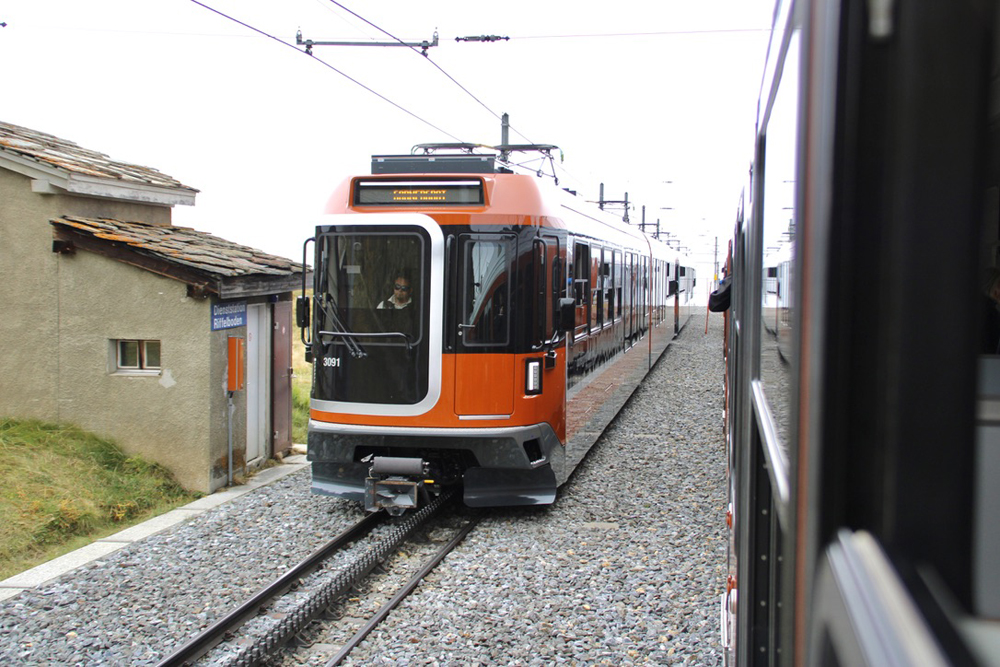






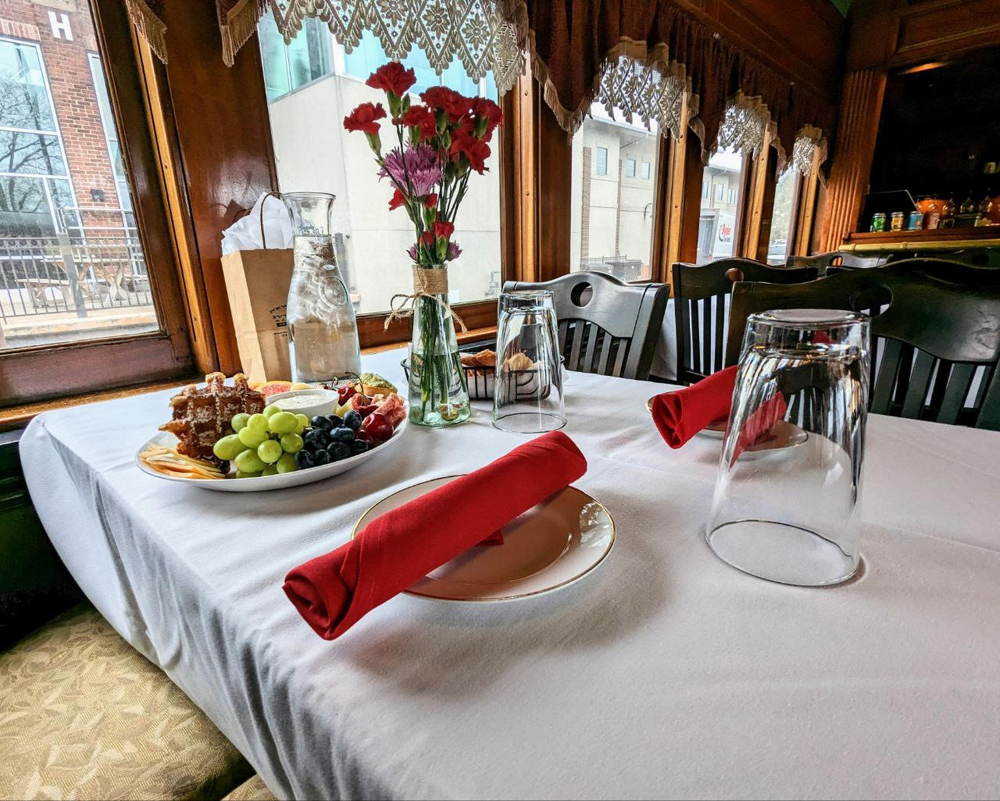
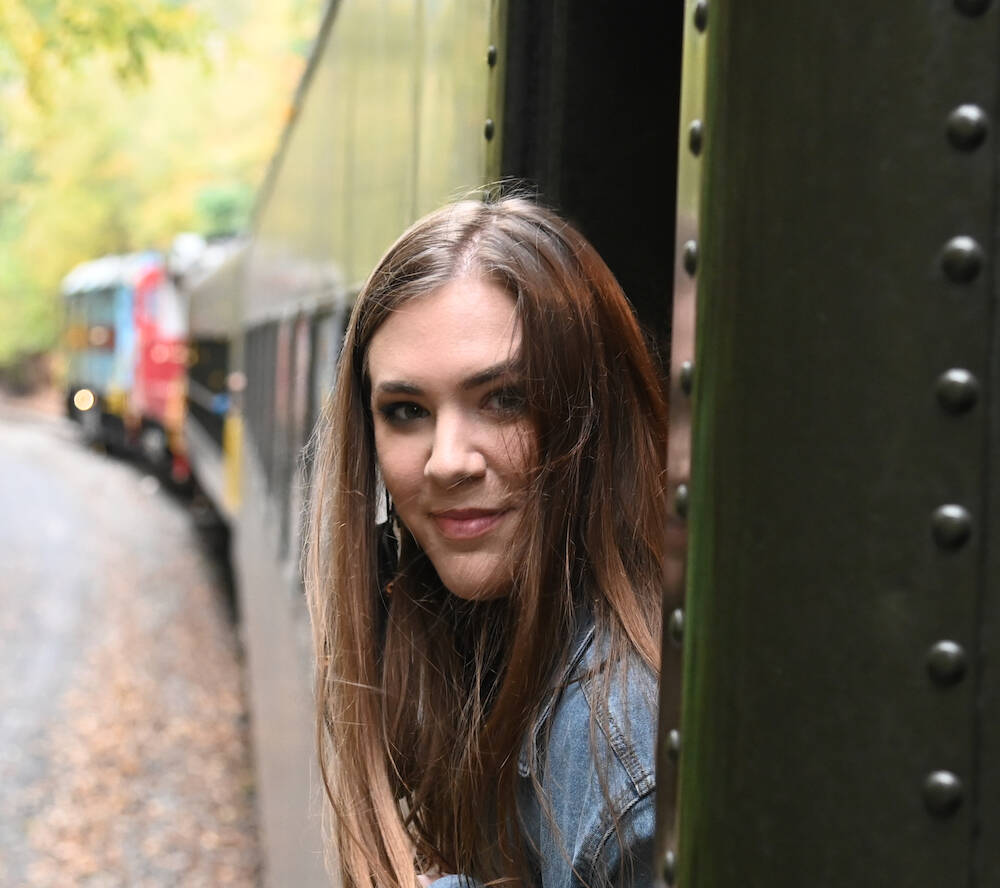
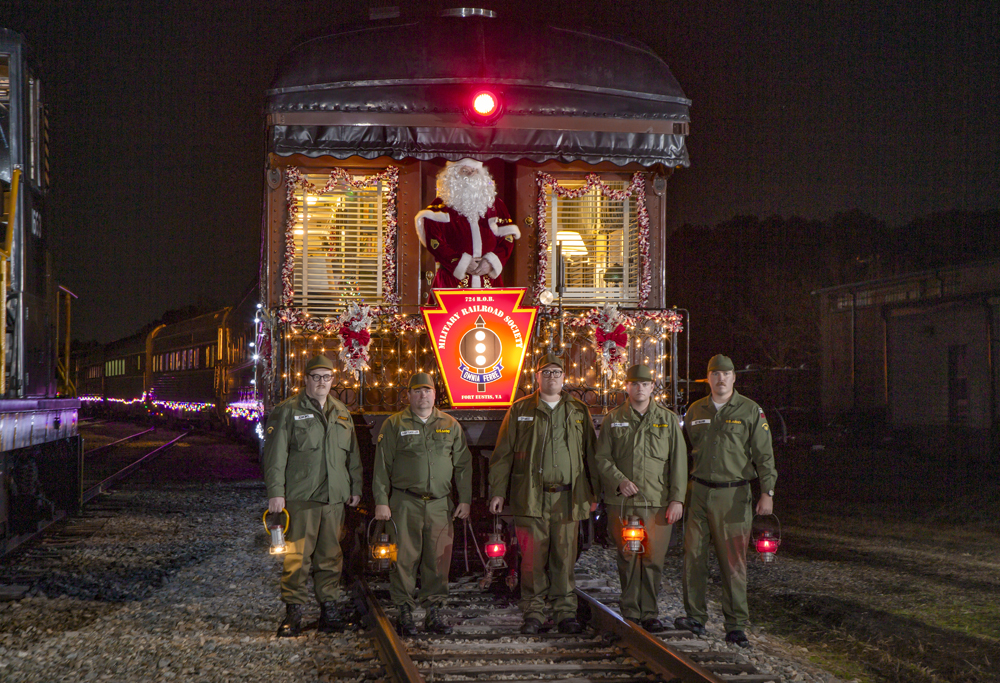
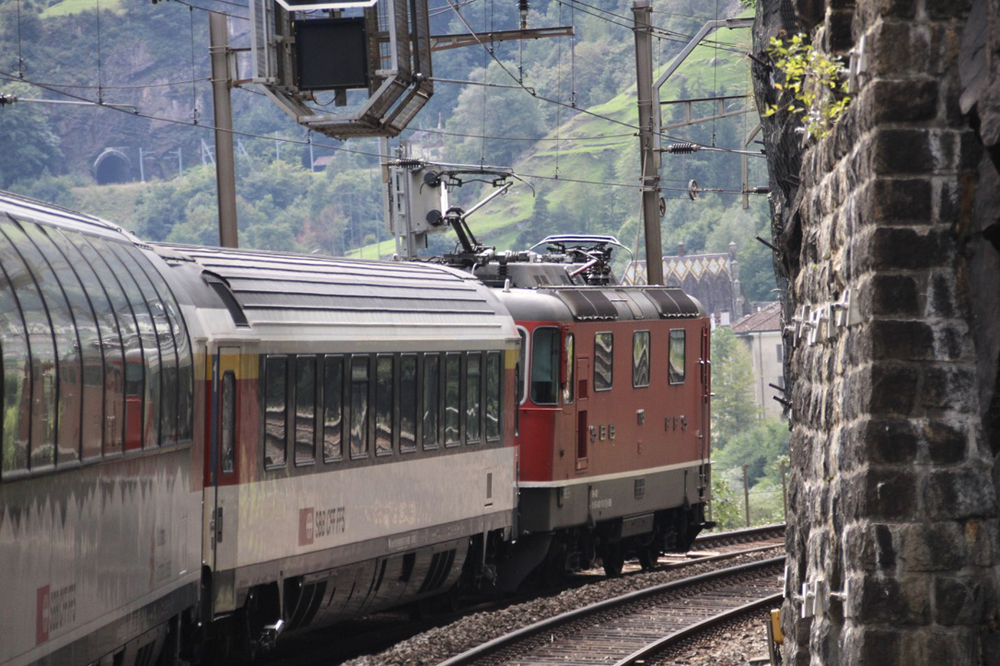




A little bit of nitpicking:
• The Furka line was never Rhätische Bahn, but originally “Brig Furka Disentis”, turning into “Furka Oberalp”, and merging with the “Brig Visp Zermatt” to the MGB, “Matterhorn Gotthard Bahn” some years ago. There is a technical compatibility with the Rhätische Bahn, allowing cars to run through (leading to the Glacier Express).
• Oberalp is the name of the pass between Disentis and Andermatt. The Furka Bergstrecke runs between Oberwald and Realp.
And some factoids:
• Pininfarina has been designing rail vehicles for quite some time already.
• In typical Stadlerrail manner, these latest generation trains of the Gornergratbahn are named POLARIS, standing for “POpular LAndscape Railway In Switzerland”
• Because it had to cross a well known avalanche path, the Furka line has a bridge which is disassembled in the fall and reassembled in the spring (Steffenbachbrücke; there are videos of the (dis-)assembly on Youtube); this is one of the reasons why the Furka base tunnel was built, and also a reason for the professionality of the Dampfbahn Furka Bergstrecke.
• The Gornergratbahn is one of only three (IRIC) cog railways operating with 3-phase AC (that’s why you see the double wires and pantographs). The other are the Jungfraubahn and the Chemin de fer de la Rhune in the Pyrenées.
Not a factoid, but it was a bit a shame that the weather was not that good yesterday and today.
An additional nitpick (but I may have misinterpreted the statement). The line over the Oberalp and Furka passes is a cog railway too…